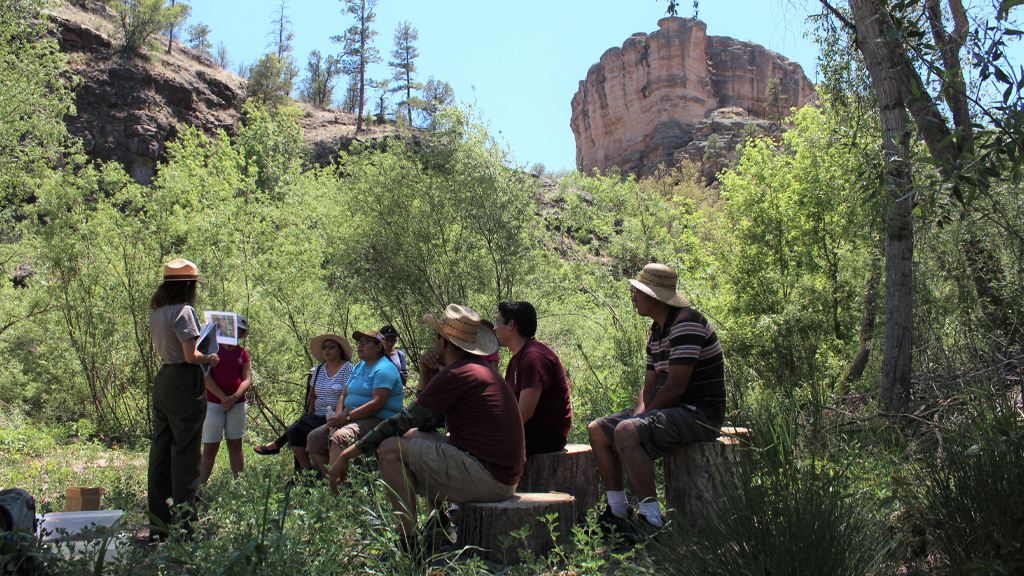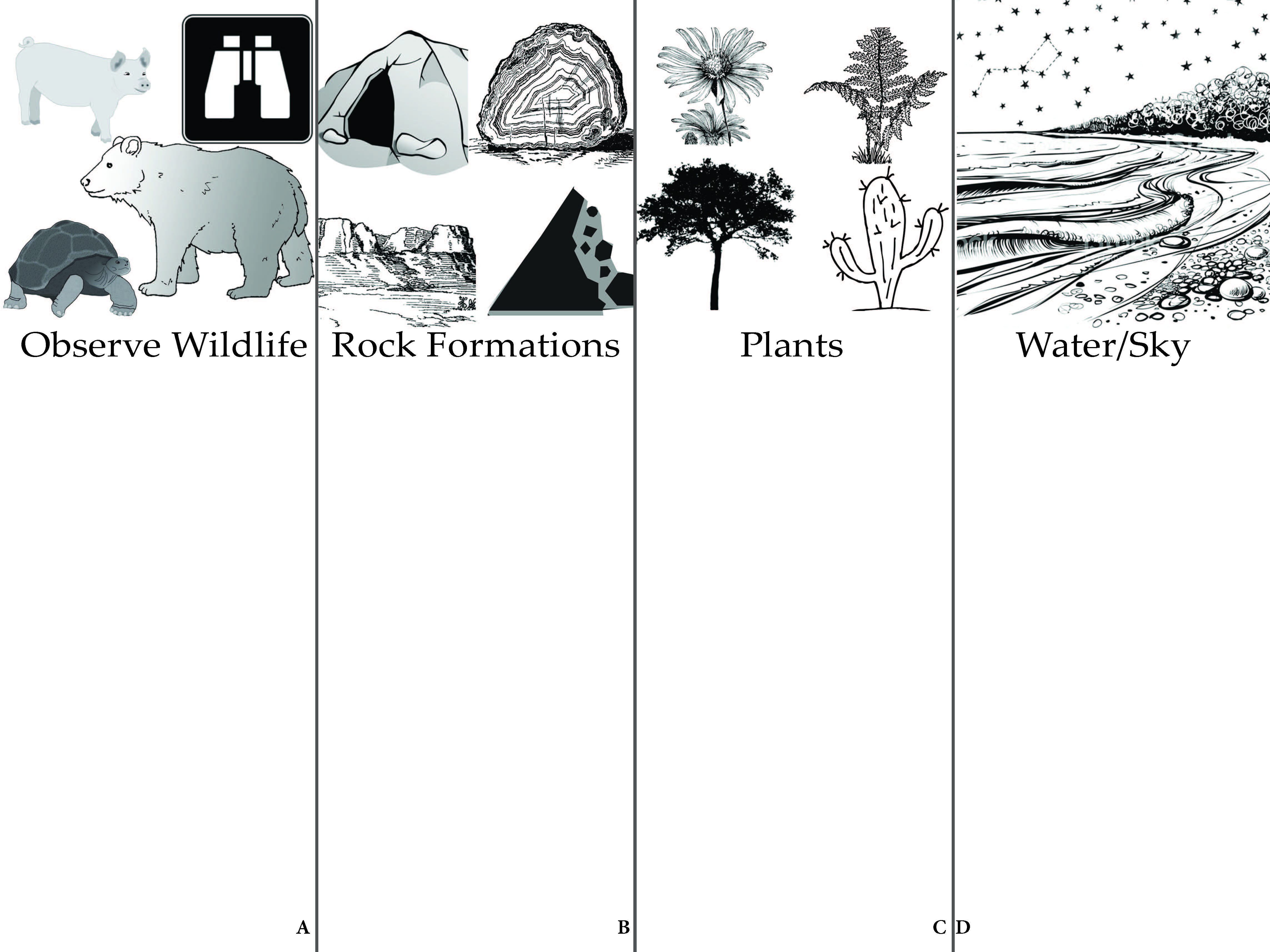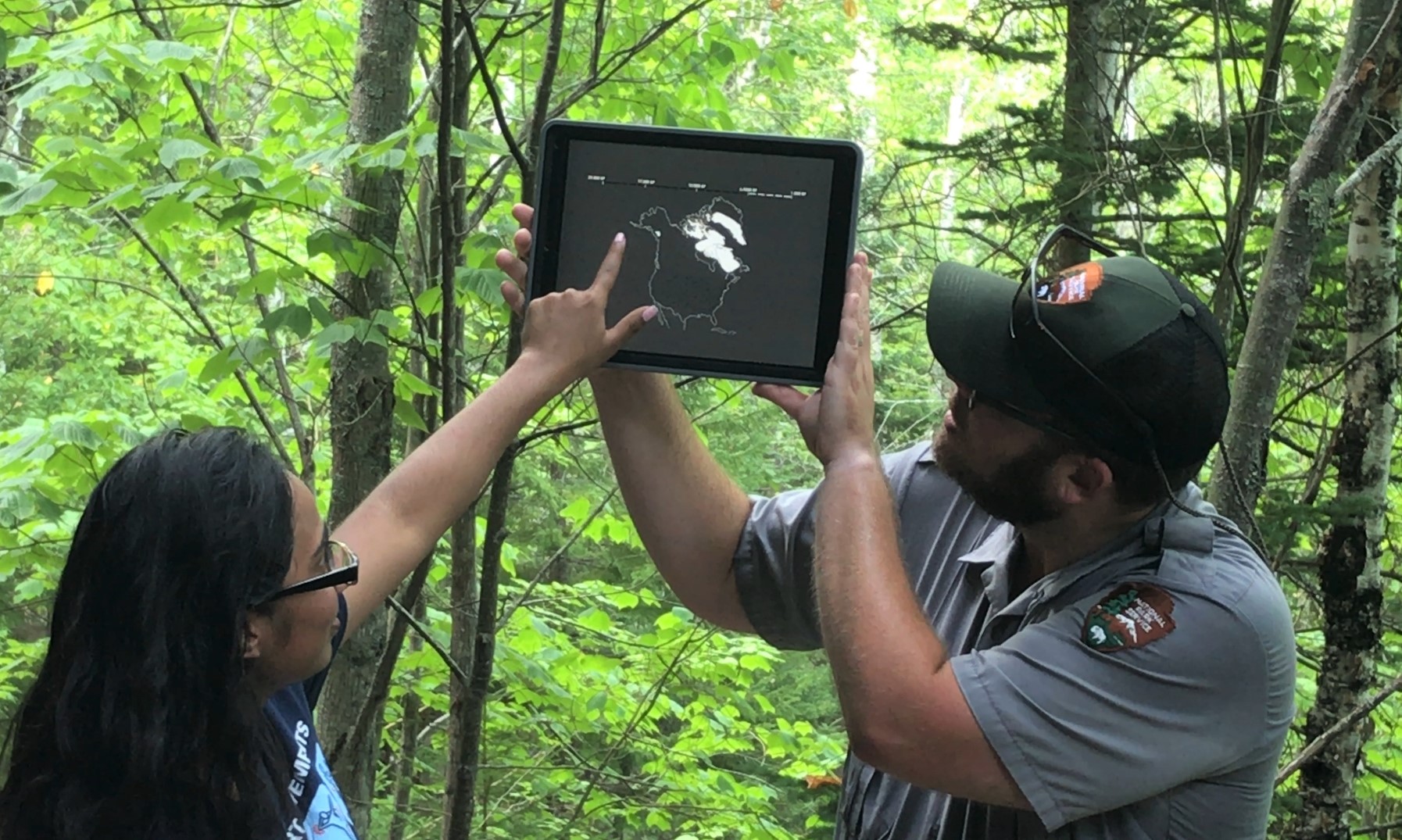Brief
Connecting Field Trips and Family Interest: A Tool to Elicit English- and Spanish-Speaking Families’ Interests
Connected Science Learning October-December 2020 (Volume 2, Issue 4)
By Martha Merson and Scott Pattison

Protected lands such as wildlife sanctuaries, botanic gardens, and state and national parks are popular destinations for school groups. Prior to a field trip, educators may do preparatory assignments with students, recruit parents as chaperones, and host a ranger for a classroom visit. Inviting families to take part in park visits is a particularly promising strategy for connecting with caregivers who feel ill-at-ease in school buildings (e.g., see CommonSense.org on 8 Ways to Build Stronger Relationships with Latinx Families). Interactions in outdoor settings sidestep the formality of school-based meetings. To maximize the potential for family learning, we wanted a convenient, context- and place-appropriate way for educators and park rangers to open conversations about individuals’ and families’ interests.
During the National Science Foundation–funded iSWOOP project (Interpreters and Scientists Working on Our Parks, iswoopparks.com), teams of researchers developed and piloted two activity-based interview instruments for eliciting the interests that visitors bring to park experiences (Figure 1).

We tested the activities and interview questions at parks and nature centers with English- and Spanish-speaking families, and found that the activities and accompanying questions were successful in eliciting visitors’ interests (Figure 2). Interests play a role in shaping what families do, how they engage, and what they take away from their experiences (Figure 3). Research on teaching and learning—both inside and outside of school—has demonstrated that interest is a central component of lifelong learning, motivating individuals to attend to experiences in the moment and seek out new learning experiences as their interests grow. For more information, see this resource by the Center for Advancing Informal Science Education.

In our experience, soliciting input on how the park can better address family visitors’ interests signaled a serious desire to welcome them. A language consultant observed, “You care about me and my family. I felt connected. … Helping people get information and education—that leads to success in the family—more knowledge and more power.” While listening to adults and children, instrument testers matched families with learning opportunities in the parks that fit their interests (e.g., music, cooking, crafts, or yoga; Figure 4), which were less well-known than standard tours or self-guided experiences. Understanding visitor interests is key to maximizing and furthering the STEM learning that school-initiated field trips spark.
For those who organize and deliver park visits for youth or multigenerational groups, the tools and protocols are available on http://www.iswoopparks.com/about/reports/. The bilingual instrument and protocol
- can be used by educators, rangers, or researchers;
- are designed for use with families who are English or Spanish speaking;
- and can be adapted for use during or before a park visit.
We invite formal and informal educators to adapt the tool to their own goals and welcome partnerships with those who want to experiment with the instrument.
Acknowledgments
The project—jointly led by researchers at TERC in Cambridge, Massachusetts, and Winston-Salem State University—is made possible with support from the National Science Foundation DRL-1514776. Any opinions, findings, and conclusions or recommendations expressed in this material are those of the authors and do not necessarily reflect the views of the National Science Foundation.
We are grateful to data collectors and many park staff who have assisted and supported our work and to countless advisors who have contributed expertise and guidance. For their advice on culture, language, and design, we especially thank our TERC colleagues Sarah Hill, Nuria Jaumot-Pascual, Valerie Martin, Audrey Martinez-Gudapakkam, Sabrina de los Santos, Smirla Ramos-Montañez, and Tracey Wright. Opening photo credit: R. Torres Castillo.
Martha Merson (martha_merson@terc.edu) is a project director at TERC. Scott Pattison (scott_pattison@terc.edu) is a research scientist at TERC.
citation: Merson, M., and S. Pattison. 2020. Connecting field trips and family interest: A tool to elicit English- and Spanish-speaking families’ interests. Connected Science Learning 2 (4). https://www.nsta.org/connected-science-learning/connected-science-learning-october-december-2020/connecting-field-trips
Multilingual Learners Environmental Science STEM Middle School Elementary High School Informal Education


